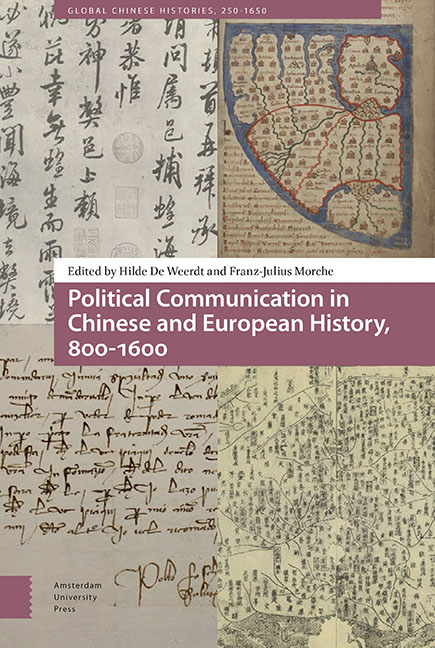Book contents
- Frontmatter
- Dedication
- Contents
- List of Figures and Tables by Chapter
- Acknowledgments
- Introduction
- Part I Communication and the Formation of Polities
- Part II Letters and Political Languages
- Part III Communication and Political Authority
- Part IV Memory and Political Imaginaries
- Epilogues
- List of Contributors
- Index
7 - Communication and Empire: Byzantium in Perspective
Published online by Cambridge University Press: 17 June 2021
- Frontmatter
- Dedication
- Contents
- List of Figures and Tables by Chapter
- Acknowledgments
- Introduction
- Part I Communication and the Formation of Polities
- Part II Letters and Political Languages
- Part III Communication and Political Authority
- Part IV Memory and Political Imaginaries
- Epilogues
- List of Contributors
- Index
Summary
Abstract
The Roman world in the second century was remarkably homogeneous, and the ties that bound it together remarkably thick and apparently strong. But what happened when the western half went its own way, when imperial territories were limited to bits of Asia Minor and the Balkans, when the construction of new monumental buildings had slowed to a trickle or stopped entirely, when the epigraphic habit had died? How did political communication work in the Roman empire of the Middle Ages that we know as Byzantium? The answer requires conjuring up a picture of people on the move; of soldiers, priests, students, pilgrims, appellants, merchants, tax collectors, administrators, painters, and builders. And it requires thinking about the messages they received and passed on. Placing the Byzantine experience in comparative perspective to Song China, this chapter surveys the evidence of Byzantine political communication to investigate both the means of transmitting news and orders as well as the underlying networks of shared discourse and identity. It shows that the survival of the Byzantine state depended largely on its ability to create an imagined community as the nation-state of the Romans. The decline of Byzantium and the rise of Muslim identities in its former territories can thus be linked to a failure to maintain effective long-distance communication networks that projected a ‘Roman’ narrative across the entirety of the empire.
Keywords: Byzantium, Song China, political communication, material culture, imagined community, Empire, identity
It is not hard to see that communication — political communication — lies at the heart of empire. In communication, both in the simple sense of the transmission of orders from centre to periphery, and information from periphery to centre, and in the more complex one of creating networks of shared discourse and identity, lie the limits of empire.
To some extent historians (and empire builders) have always known this, but work over the last three decades or so has made the processes more obvious. The potential bibliography is vast, but the seminal classic in the field remains Benedict Anderson's Imagined Communities, first published in 1983, and most recently reissued in 2016, its appeal undimmed. After Anderson who could possibly talk about nations and states, identity and political community, without invoking communication? Many medievalists reading Anderson's book when it first appeared were quick to react against his chronology, and the link he drew between national consciousness and print technology.
- Type
- Chapter
- Information
- Publisher: Amsterdam University PressPrint publication year: 2021



